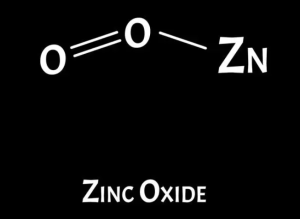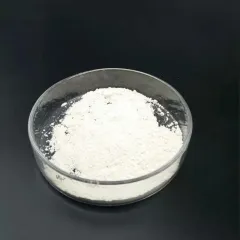Natural gas, oil field gas, refinery gas, synthesis gas, coal gas… Various gas sources must be desulfurized before being used in synthetic ammonia, synthetic methanol, hydrogen production, coal chemical, petrochemical, and others. In chemical synthesis, reducing the total sulfur content after purification to a level below 0.1×10-6 is often necessary.
Zinc oxide
No matter wet or dry or what process is used, in today’s chemical industry, zinc oxide fine desulfurization has always occupied a key position that cannot be ignored. Zinc oxide desulfurization, with its outstanding advantages such as high precision, easy use, stable operation, and large sulfur capacity, is always at the final “checkpoint” in traditional combined desulfurization systems and can be called the quality inspector in the desulfurization industry.
Zinc oxide can directly absorb hydrogen sulfide and generate stable zinc sulfide. The product is stable and has low reactivity, making the absorption of hydrogen sulfide relatively complete. It also has good reactivity towards mercaptans in organic sulfur and can be directly absorbed by zinc oxide and converted into zinc sulfide. Usually, the gas source to be treated reduces the hydrogen sulfide content to 1ppm after organic sulfur hydrohydrolysis and crude desulfurization processes, and then the crude desulfurization gas is introduced into the zinc oxide desulfurization tower. The total sulfur content at the outlet can be reduced to less than 0.1×10-6, which can meet Most of the chemical synthesis industry needs.
In the traditional zinc oxide desulfurization process, the operating temperature is generally selected between 178°C and 430°C. Increasing the reaction temperature can increase the working sulfur capacity of the desulfurizer, which can reach the maximum at around 400°C.
The desulfurization reaction requires a certain contact time. If the space velocity is too high, the residence time of the reactants is too short, and the reaction will completely leave the bed before the reaction can proceed, which will reduce the working sulfur capacity of the desulfurizer. A lower air velocity can be used since the reaction between zinc oxide and hydrogen sulfide is fast and complete, and there is no gas film effect. However, if it is too low, the volume of the desulfurization tank may be too large. Usually, an air velocity of 1000-3000h-1 can be used.

Since carbon dioxide can react with zinc oxide under certain conditions to generate zinc carbonate, which reduces the pore volume of zinc oxide and affects the desulfurization performance, if the carbon dioxide is too high before using the zinc oxide method for desulfurization, decarbonization treatment is required.
Due to the relatively high cost of zinc oxide, sufficient pretreatment of the gas source is required before using the zinc oxide method for final desulfurization. As for the main treatment object “sulfur,” a method similar to oxidation is generally used before zinc oxide refined desulfurization. Relatively low-cost desulfurizers such as iron reduce the sulfur in the gas to be treated to less than 1pp and then connect it to the zinc oxide method for desulfurization.
Nowadays, microcrystalline adsorption desulfurization has appeared in the market, and the treatment results can also reach a very low level. However, in general, zinc oxide method fine desulfurization still occupies a very important position!
Supplier
TRUNNANOÂ is a supplier of Zinc Sulfide with over 12 years experience in nano-building energy conservation and nanotechnology development. It accepts payment via Credit Card, T/T, West Union and Paypal. Trunnano will ship the goods to customers overseas through FedEx, DHL, by air, or by sea. If you are looking for high-quality Zinc Sulfide, please feel free to contact us and send an inquiry.


